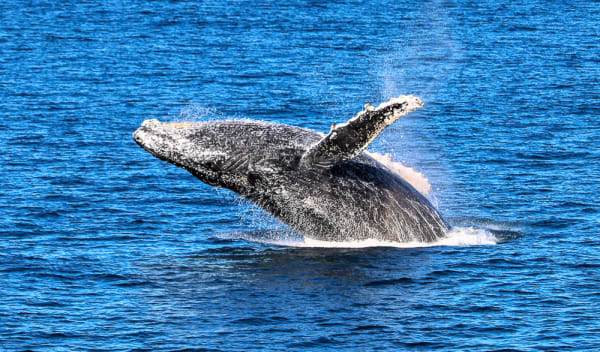First things first. If you missed last week’s deep dive (pun absolutely, 100 percent intended) into Bushrangers Bay with Steve Gillespie, you should catch up here. Trust me, do it for the incredible photos alone. And while it’s clear that beneath the surface is full of breathtaking wildlife, above it, amongst the coastal heathland and rocky shoreline, there are some not to be missed moments too. There are way too many to list, but here are some of my favourites.
Bass Point holds a special place in my heart. My dad would take me there to go fishing with him (note: fishing is allowed at Bass Point but NOT in Bushrangers Bay, which is an aquatic reserve). Or rather, to stand there, rod in hand, too scared to tell him that I had somehow, once again, gotten another ‘snag’. So I’d stand there, sometimes shuffling down onto my haunches and just stare at the ocean, watching the colours of the water change. It was during those quiet hours that I learnt, if you stare at the ocean long enough, something will happen.

And happen it does, especially during the annual humpback whale migration between the months of May and November. I really don’t think there’s a better place in all the Illawarra for such close encounters with these giants. But be prepared to put in the hours, waiting for them to come past. As Steve Gillespie says, “Whales don’t wear watches so there is no particular time that they might appear. They may breach and make a huge splash or just casually ‘blow’ when they come to the surface for a breath. Either way, it’s a thrill to be near them.”

However, whales aren’t the only marine mammals that regularly show themselves. Fur seals are often spotted in Bushrangers Bay and around the rocks at Bass Point hunting for fish and octopus. If you see them with a flipper up in the air, they’re either resting or thermoregulating. Just like you might chuck a foot out of the bed to cool down, they pop a flipper or two up to warm their bodies. You might be especially lucky and see one hauled out on the rocks having a rest. Remember there’s an exclusion zone of 40 metres, for yours and the seal’s safety.

Now to an animal that I’m sure most people won’t need to be told to keep 40 metres from: snakes. I know not everywhere is a fan, but snakes are fabulous pest controllers and really beautiful animals. My best tip for wildlife watching overall is to keep an eye on those people with cameras. While looking for humpbacks, I noticed two blokes frantically pulling out their phones to film… something. I turned and ran straight towards them, and got to watch two male red-bellied black snakes in combat with each other. There was likely a female nearby and so, a little argy bargy was needed to see who’d win the right to mate with her, and they coiled around each other, repeatedly trying to push the other one down towards the ground with the loser eventually slithering off into the undergrowth. Hands down one of my favourite wildlife encounters ever!

And finally, to an encounter I didn’t have but wish I did. Christine Harris-Hansell was fortunate to be in the right place at the right time, (well, right place if you include having to make a frantic dash to get to the right place) this week. She got to witness, and get incredible photos of an Eastern Osprey fly in to a tree, a huge, freshly caught fish in its talons. Any bird of prey is a special sighting in my eyes, but Eastern Ospreys are listed as vulnerable in NSW meaning they’re at risk of extinction. They’re a truly special bird, and big too, with a wingspan of up to 1.7m so an impressive sight all round.

I can’t promise you any of these experiences if you head down to Bass Point Reserve or walk the perimeter of Bushrangers Bay. You might spend hours and only see the occasional tern or silver gull. Or you might have a once in a lifetime experience. There’s only one way to find out. Get out there and explore.






